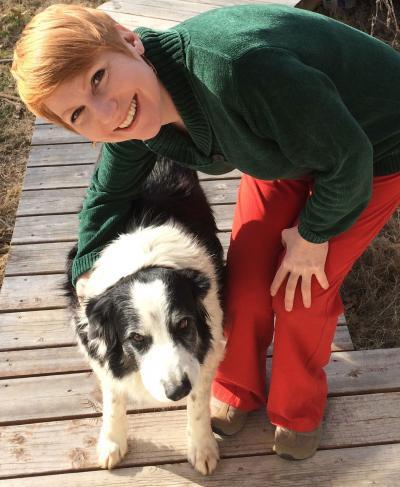This will not surprise most dog owners: Dogs can act jealous, finds a new study from the University of California, San Diego. Darwin thought so, too. But emotion researchers have been arguing for years whether jealousy requires complex cognition. And some scientists have even said that jealousy is an entirely social construct – not seen in all human cultures and not fundamental or hard-wired in the same ways that fear and anger are.
The current study – published in PLOS ONE by UC San Diego psychology professor Christine Harris and former honors student Caroline Prouvost – is the first experimental test of jealous behaviors in dogs. The findings support the view that there may be a more basic form of jealousy, which evolved to protect social bonds from interlopers.
Harris and Prouvost show that dogs exhibit more jealous behaviors, like snapping and pushing at their owner or the rival, when the owner showed affection to what appeared to be another dog (actually a stuffed dog that barked, whined and wagged its tail). Dogs exhibited these behaviors more than if the same affection was showered on a novel object and much more than when the owner's attention was simply diverted by reading a book.
"Our study suggests not only that dogs do engage in what appear to be jealous behaviors but also that they were seeking to break up the connection between the owner and a seeming rival," Harris said. "We can't really speak to the dogs' subjective experiences, of course, but it looks as though they were motivated to protect an important social relationship."
Since there had been no prior experiments on dog jealousy, the researchers adapted a test used with 6-month-old human infants. They worked with 36 dogs in their own homes and videotaped the owners ignoring them in favor of a stuffed, animated dog or a jack-o-lantern pail. In both these conditions, the owners were instructed to treat the objects as though they were real dogs – petting them, talking to them sweetly, etc. In the third scenario, the owners were asked to read aloud a pop-up book that played melodies. Two independent raters then coded the videos for a variety of aggressive, disruptive and attention-seeking behaviors.

This image depicts emotion researcher Christine Harris, professor of psychology at UC San Diego, with Samwise, one of three border collies to inspire the study on dog jealousy.
(Photo Credit: Photo by Steve Harris.)
Dogs were about twice as likely to push or touch the owner when the owner was interacting with the faux dog (78 percent) as when the owner was attending to the pail (42 percent). Even fewer (22 percent) did this in the book condition. About 30 percent of the dogs also tried to get between their owner and the stuffed animal. And while 25 percent snapped at the "other dog," only one did so at the pail and book.
Did the dogs believe the stuffed animal was a real rival? Harris and Prouvost write that their aggression suggests they did. They also cite as additional evidence that 86 percent of the dogs sniffed the toy dog's rear end during the experiment or post-experiment phase.
The majority of research on the topic, Harris said, is on jealousy between human mates. But a great deal of jealousy in humans concerns siblings, friends and even close co-workers. Also, the first signs of human jealousy are seen in babies and young children, she said, suggesting both that the emotion may have evolved with siblings competing for parental resources and that we are "wired up" for it.
Understanding jealousy is important, the researchers write, because it is an emotion with far-reaching psychological and social consequences. For example, it often emerges as the third leading cause of non-accidental homicide.
"Many people have assumed that jealousy is a social construction of human beings – or that it's an emotion specifically tied to sexual and romantic relationships," Harris said. "Our results challenge these ideas, showing that animals besides ourselves display strong distress whenever a rival usurps a loved one's affection."